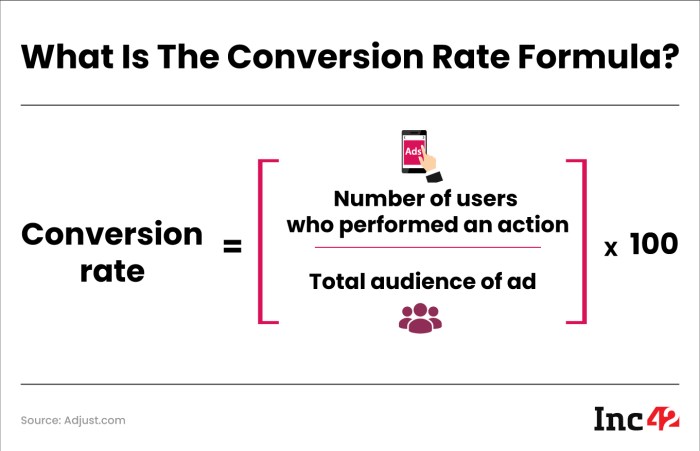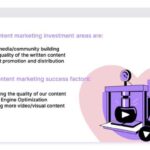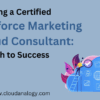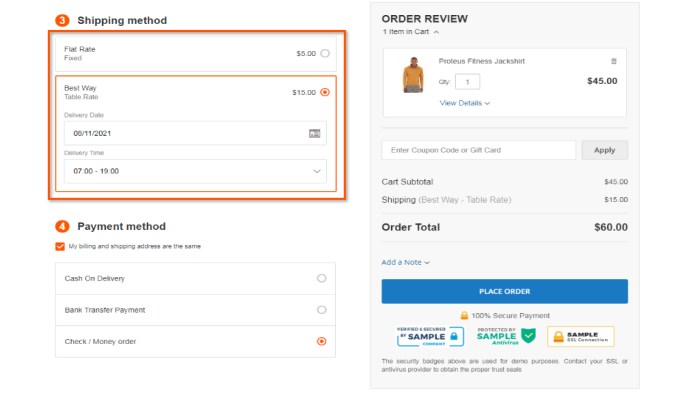What is a good conversion rate? It’s a question that plagues businesses across every industry. This deep dive explores the multifaceted nature of conversion rates, from defining them precisely to optimizing them for maximum impact. We’ll uncover the factors that influence conversion, the best methods for measuring and tracking, and how to benchmark against industry standards. Ultimately, we’ll equip you with the knowledge to not only understand what a good conversion rate is but also how to achieve it for your own business.
Conversion rates aren’t a one-size-fits-all metric. Understanding the specific types of conversions relevant to your business—whether it’s newsletter sign-ups, product purchases, or content downloads—is crucial. Different industries have different averages, and what might be considered “good” in one sector could be “bad” in another. We’ll explore the nuances and provide practical examples to help you contextualize your own conversion data.
Defining Conversion Rate

Conversion rate is a crucial metric in marketing and sales that measures the percentage of visitors or leads who complete a desired action. It’s a key indicator of how effectively your marketing efforts are driving the desired outcomes. A high conversion rate signifies a strong campaign that resonates with your target audience.Understanding conversion rate goes beyond just calculating a number; it involves analyzing the factors that influence it and tailoring your strategy to improve it.
This includes understanding the relationship between conversion rate and other key metrics like website traffic, lead generation, and ultimately, sales. The insights gained from analyzing conversion rates allow businesses to optimize their strategies and maximize their return on investment.
Conversion Rate Definition
Conversion rate is the percentage of visitors or leads who complete a desired action, such as making a purchase, signing up for a newsletter, or downloading a resource. It’s calculated by dividing the number of conversions by the total number of visitors or leads and multiplying by 100. This simple formula provides a direct measure of effectiveness.
Relationship with Other Metrics
Conversion rate is intrinsically linked to other key metrics. Higher traffic volume doesn’t automatically translate to more conversions; a high conversion rate signifies that a larger percentage of visitors are performing the desired action. Similarly, a high conversion rate can indicate a strong lead generation process, as it shows that a larger portion of leads are progressing through the sales funnel.
Ultimately, a strong conversion rate often correlates with increased sales, signifying a successful marketing strategy.
Types of Conversions
Numerous actions can be categorized as conversions, each serving a specific purpose within a marketing strategy. Understanding the various types of conversions allows businesses to tailor their strategies to achieve specific objectives.
- Sign-ups: Sign-ups for newsletters, email lists, or product trials are essential for building a customer base and fostering engagement. These actions represent a crucial step in building a loyal customer base, providing valuable opportunities for future marketing campaigns.
- Purchases: Completing a purchase is the ultimate conversion goal for e-commerce businesses. A high purchase conversion rate indicates a successful online store that effectively attracts and converts customers.
- Downloads: Downloads of ebooks, white papers, or other valuable resources demonstrate visitor interest in your offerings. High download rates suggest that your content is appealing and informative, attracting the target audience.
- Lead generation: Capturing leads through forms or other methods provides a direct way to nurture potential customers. High lead generation conversion rates indicate that your lead magnets and calls to action are effective at attracting potential clients and building an engaged audience.
Conversion Types and Metrics Comparison
This table provides a concise comparison of various conversion types and the associated metrics.
| Conversion Type | Metric | Formula | Example |
|---|---|---|---|
| Sign-ups | Conversion Rate | (Number of Sign-ups / Number of Visitors) – 100 | 100 sign-ups from 500 visitors = 20% conversion rate |
| Purchases | Conversion Rate | (Number of Purchases / Number of Visitors) – 100 | 20 purchases from 200 visitors = 10% conversion rate |
| Downloads | Conversion Rate | (Number of Downloads / Number of Visitors) – 100 | 500 downloads from 1000 visitors = 50% conversion rate |
| Lead Generation | Conversion Rate | (Number of Leads / Number of Visitors) – 100 | 150 leads from 500 visitors = 30% conversion rate |
Factors Influencing Conversion Rate

Conversion rates are the lifeblood of any online business. Understanding what drives them is crucial for optimizing your website and marketing efforts. A high conversion rate translates directly to increased revenue and a healthier bottom line. This section dives into the key factors that influence conversion rates, from website design to user behavior analysis.Understanding the interplay of these factors allows businesses to identify areas for improvement and ultimately achieve better results.
A well-optimized website, supported by a strong marketing strategy and a seamless customer experience, is the recipe for a robust conversion rate.
Website Design and User Experience
A visually appealing and user-friendly website is paramount. Effective website design encompasses more than just aesthetics; it’s about creating a seamless and intuitive experience for visitors. The layout, navigation, and overall design should guide users effortlessly towards desired actions. Clear calls to action, easily accessible contact information, and well-organized content are vital components of a conversion-optimized website.User experience (UX) plays a significant role in driving conversions.
A positive UX encourages visitors to engage with the site, explore its offerings, and ultimately convert. Poor UX, on the other hand, can lead to high bounce rates and a lack of conversions. Considering factors such as ease of navigation, page load speed, mobile responsiveness, and overall site structure are essential to crafting a positive UX. A well-designed website that is easy to navigate and visually appealing will encourage users to explore the site, fostering engagement and increasing conversion rates.
Marketing Campaigns and Strategies
Marketing campaigns are crucial for driving traffic to a website and influencing conversion rates. Effective campaigns consider the target audience, utilize appropriate channels, and resonate with their needs. The content, messaging, and calls to action in marketing materials should be compelling and persuasive. A well-targeted marketing campaign should guide users to the specific landing pages that match their interests, ultimately increasing the chances of conversion.
For example, a targeted social media ad campaign can effectively direct potential customers to a specific product page, driving conversions.
Technical Aspects and Performance
Website speed and mobile responsiveness are crucial technical factors affecting conversion rates. A slow-loading website can frustrate visitors, leading to a higher bounce rate and decreased conversions. A website that doesn’t function seamlessly on mobile devices can deter potential customers, potentially leading to a loss of conversions. Mobile responsiveness is essential to maintain a positive user experience across different devices.
Prioritizing website speed and ensuring seamless mobile functionality are crucial for a successful online presence.
Analyzing User Behavior
Analyzing user behavior on a website is essential for understanding how users interact with the site. Tools like Google Analytics provide valuable insights into user journeys, identifying pain points, and areas for improvement. Tracking metrics like bounce rate, time spent on pages, and click-through rates can help determine where users are dropping off and what factors might be contributing to a lack of conversions.
This analysis allows for informed decisions regarding website optimization and targeted marketing strategies.
A good conversion rate really depends on your industry and goals, but generally, anything above 2% is a great start. To accurately track those conversions, understanding how to properly set up the TikTok ad pixel in WordPress is crucial. This guide will walk you through the process, ensuring your data is precise, allowing you to fine-tune your campaigns and optimize for those higher conversion rates.
Ultimately, the goal is to maximize your return on investment, and having a solid setup will help you achieve a better understanding of what constitutes a good conversion rate for your specific business.
Improving Conversion Rates Across Industries
Specific strategies for improving conversion rates vary across industries. For e-commerce businesses, optimizing product pages with high-quality images and detailed descriptions is crucial. For service-based businesses, highlighting testimonials and case studies can build trust and encourage conversions. For example, in the travel industry, user-friendly booking engines and clear pricing structures can improve conversion rates.
Common Conversion Rate Issues and Solutions
| Conversion Rate Issue | Potential Solution |
|---|---|
| Poor website design | Refine website layout, navigation, and visual appeal. Implement clear calls to action. |
| Slow website loading speed | Optimize images, minimize HTTP requests, and utilize a Content Delivery Network (CDN). |
| Lack of mobile responsiveness | Ensure the website is fully functional and accessible on all devices. |
| Inconsistent messaging | Maintain a consistent brand message and tone across all marketing materials. |
| Insufficient user engagement | Implement interactive elements, improve website navigation, and create engaging content. |
Measuring and Tracking Conversion Rate
Understanding your conversion rate is crucial for any online business. It’s not enough to simply drive traffic to your website; you need to measure how effectively that traffic translates into desired actions. This section delves into the methods and tools for accurately measuring and tracking conversion rates, helping you gain valuable insights into your marketing efforts.Conversion rate tracking allows you to monitor the effectiveness of your marketing strategies and optimize your website and campaigns.
A good conversion rate really depends on the context. For instance, a high conversion rate for a landing page focused on a limited-time offer might be different than the conversion rate you’d expect for building a loyal subscriber base, like with content creators and subscriptions. Ultimately, it’s about understanding your specific goals and audience to determine what constitutes a successful conversion rate for your unique situation.
By identifying areas for improvement, you can enhance the user experience and boost your bottom line. This data-driven approach enables informed decision-making and ensures that your resources are allocated efficiently.
Common Methods for Measuring Conversion Rates
Conversion rates are calculated by dividing the number of conversions by the total number of visitors. Different types of conversions are possible, such as purchases, sign-ups, or contact form submissions. This section Artikels the fundamental methods used to determine these conversion rates.
Tracking Conversions Across Different Platforms
Effectively tracking conversions across various platforms like websites and social media is essential for a holistic view of your marketing performance. The right tools and strategies are key to achieving this comprehensive understanding.
- Website Tracking: Website analytics tools, such as Google Analytics, provide comprehensive data on visitor behavior. This includes tracking user journeys, identifying popular pages, and understanding bounce rates. By analyzing these data points, you can pinpoint areas where users are dropping off and optimize the experience accordingly.
- Social Media Tracking: Social media platforms often offer built-in analytics that allow you to monitor the effectiveness of your social media campaigns. You can track metrics such as click-through rates, engagement rates, and conversions from social media traffic to your website. Tools like Facebook Pixel or Instagram Insights can help you track conversions from social media ads to your website.
Importance of Setting Up Conversion Tracking Properly
Properly setting up conversion tracking is fundamental to accurate data collection and informed decision-making. This process ensures that the data collected is meaningful and actionable.
- Accurate Data Collection: Precisely defining and tracking conversions allows for accurate analysis of marketing performance. This precision is crucial for evaluating the ROI of your marketing efforts and identifying areas for improvement.
- Informed Decision Making: Conversion tracking data provides actionable insights, helping you understand which marketing strategies are working and which require adjustments. This data-driven approach enables better decision-making and resource allocation.
- Optimized User Experience: Understanding user behavior through conversion tracking allows you to identify areas of friction in the user journey and optimize the user experience. This leads to a more efficient and engaging experience for your visitors.
Conversion Tracking Tools and Platforms
Numerous tools and platforms are available to assist with conversion tracking. Choosing the right tool depends on your specific needs and budget.
- Google Analytics: A widely used free analytics platform that provides detailed insights into website traffic and user behavior. It’s a powerful tool for tracking conversions, understanding user journeys, and identifying areas for improvement.
- Facebook Pixel: A tracking pixel that allows Facebook to connect actions on your website to your Facebook ad campaigns. This enables you to track conversions and optimize your ad spending.
- Hotjar: A heatmap and session recording tool that visually demonstrates how users interact with your website. It helps you identify pain points and optimize the user experience based on actual user behavior.
Conversion Tracking Methods and Their Advantages/Disadvantages
This table Artikels various conversion tracking methods and their associated benefits and drawbacks.
| Method | Advantages | Disadvantages |
|---|---|---|
| Google Analytics | Free, comprehensive data, robust reporting | Steeper learning curve, can be overwhelming for beginners |
| Facebook Pixel | Integrates with Facebook Ads, targeted advertising | Requires setup on website, potential for data privacy concerns |
| UTM Parameters | Track traffic sources, simple setup | Limited in depth analysis, manual tracking |
Interpreting Conversion Rate Data
Interpreting conversion rate data requires careful consideration of various factors, including seasonality, promotional periods, and market trends. By comparing conversion rates over time, you can identify patterns and make informed decisions.
A/B Testing for Conversion Rate Optimization
A/B testing is a crucial technique for optimizing conversion rates. It involves creating two or more variations of a webpage or marketing campaign and comparing their performance to determine which variation performs best.
A good conversion rate really depends on the industry and your specific goals. But generally speaking, anything above 2% is a strong start. This is where the power of Salesforce content comes in, boosting sales and marketing strategies by providing targeted materials that resonate with your audience, driving more leads and ultimately improving conversion rates. The power of Salesforce content boosting sales and marketing strategies is key to achieving these high conversion rates.
So, while 2% is a solid baseline, constantly optimizing your content and strategies will help you surpass that and achieve even higher conversion rates.
Benchmarking Conversion Rates: What Is A Good Conversion Rate
Understanding your conversion rate in the context of your industry is crucial for assessing performance and identifying areas for improvement. Simply achieving a high conversion rate isn’t enough; it’s about exceeding expectations for your specific market sector. A good benchmark allows you to track progress and make data-driven decisions to optimize your strategies.Industry averages serve as a starting point for evaluating your own conversion rate.
Knowing how your rate compares to others in your niche helps identify potential strengths and weaknesses. This comparison allows for targeted strategies and adjustments to improve results.
Average Conversion Rates Across Industries
Conversion rates vary significantly across different industries. Factors like the nature of the product or service, the customer journey, and marketing strategies all play a role. Understanding these differences is essential for evaluating your own performance accurately.
- E-commerce sites often see conversion rates ranging from 1% to 3%, although this can vary significantly based on the specific product category. For example, a site selling high-value items like luxury cars might have a lower conversion rate than one selling everyday consumer goods.
- Software-as-a-service (SaaS) companies, on the other hand, typically experience higher conversion rates, sometimes exceeding 5% for lead generation to paying customers, but this also depends on the pricing model and target market. Lead generation for a free trial SaaS product, for example, could have a lower conversion rate compared to a SaaS product with a subscription model.
- Financial services, due to the complexity of the sales process and the sensitive nature of the products, generally see lower conversion rates, sometimes hovering around 2-4%. For example, opening a brokerage account would be a different conversion rate compared to getting someone to invest in a specific mutual fund.
- Online advertising, with its focus on driving immediate actions, might see conversion rates ranging from 1% to 5% depending on the ad platform and target audience.
Determining “Good” and “Bad” Conversion Rates
Simply comparing your conversion rate to an industry average doesn’t automatically label it as “good” or “bad.” A more nuanced approach is necessary, one that accounts for specific business conditions and goals.A conversion rate that appears low compared to the industry average might still be excellent for your specific company if you’re achieving a high volume of leads. Similarly, a high conversion rate might be a cause for concern if it comes at the cost of a significant drop in customer lifetime value.
Importance of Segmenting Data for Benchmarking
Data segmentation is critical for accurate benchmarking. Grouping users or leads based on specific characteristics (e.g., demographics, location, source of traffic) allows you to compare performance within different segments. For example, comparing conversion rates for users coming from social media to those from search engine traffic provides valuable insights into marketing channel effectiveness.
Comparing Conversion Rates Over Time
Monitoring conversion rates over time is vital for identifying trends and patterns. This helps understand how changes in marketing strategies or website updates impact performance.Tracking these metrics helps in evaluating the effectiveness of various campaigns and making adjustments to improve future results.
- Use charts to visualize trends over different time periods (e.g., monthly, quarterly, annually). Identify periods of increased or decreased conversion rates and analyze the reasons behind these changes.
- Track your key metrics (conversion rate, bounce rate, average session duration) to identify patterns. This is particularly important for identifying potential issues, such as website usability problems or ineffective marketing campaigns.
Benchmark Conversion Rates Table, What is a good conversion rate
This table provides a general overview of benchmark conversion rates across various industries. Keep in mind that these are averages and individual results may vary significantly based on specific circumstances.
| Industry | Average Conversion Rate |
|---|---|
| E-commerce | 1-3% |
| SaaS | 3-5% |
| Financial Services | 2-4% |
| Online Advertising | 1-5% |
| Lead Generation | 0.5-2% |
Optimizing Conversion Rate
Turning website visitors into paying customers requires a multifaceted approach. Simply having a well-designed website isn’t enough. Effective conversion rate optimization (CRO) involves understanding user behavior, refining the customer journey, and continually testing and improving strategies. This crucial step goes beyond aesthetics; it delves into the psychology of decision-making and leverages data to maximize the return on investment (ROI) of marketing efforts.A robust CRO strategy combines data analysis, creative problem-solving, and a deep understanding of user needs.
By focusing on the user experience, optimizing website functionality, and crafting compelling content, businesses can significantly improve conversion rates. This ultimately translates into increased revenue and business growth.
Website Design Optimization
Website design plays a pivotal role in conversion rates. A well-structured, visually appealing website that is easy to navigate encourages users to stay longer and explore more deeply. Aesthetics matter, but functionality is paramount. Clear calls to action, intuitive navigation, and fast loading times are crucial for a positive user experience.
User Experience Enhancement
A seamless user experience is paramount to successful conversions. Understanding how users interact with your website—their pain points, their motivations, and their paths—is essential. Analyzing website analytics, conducting user testing, and actively seeking feedback helps to pinpoint areas needing improvement. Improving site usability and responsiveness can boost engagement and conversions.
A/B Testing
A/B testing is a powerful tool for refining website elements. It involves creating variations of specific elements (e.g., button text, images, layouts) and comparing their performance. Testing different versions allows you to identify which option drives the highest conversion rate. This data-driven approach is crucial for making informed decisions and constantly improving conversion strategies.
Content Marketing Strategies
High-quality content is essential for driving conversions. Blog posts, articles, infographics, and videos can educate potential customers, establish credibility, and ultimately build trust. This trust translates into conversions, as customers are more likely to choose a brand they perceive as knowledgeable and trustworthy.
Landing Page Optimization
Landing pages are critical touchpoints in the customer journey. They should be focused and optimized for specific goals. A well-designed landing page, with clear calls to action, concise messaging, and compelling visuals, significantly impacts conversion rates. Optimizing landing pages for mobile devices is critical in today’s mobile-first world.
Persuasive Copywriting Techniques
Compelling copywriting is vital for driving conversions. Clear, concise language, benefits-driven messaging, and a sense of urgency are key elements. Storytelling can also be a powerful tool to connect with potential customers on an emotional level. Use of strong action verbs and clear calls to action can greatly impact conversion rates.
Personalization in Conversion Optimization
Personalization is crucial for boosting conversions. Tailoring website content and messaging to individual user preferences, behaviors, and needs significantly increases engagement. This targeted approach builds a stronger connection with potential customers, leading to increased conversions.
User Feedback Analysis
Collecting and analyzing user feedback provides valuable insights into areas needing improvement. Surveys, feedback forms, and user testing sessions can reveal pain points and areas for optimization. This feedback is invaluable for refining the user experience and driving conversions.
Website Optimization Techniques
| Optimization Technique | Potential Impact on Conversion Rates |
|---|---|
| Improved Website Navigation | Increased user engagement and time spent on site, leading to higher conversion rates. |
| Clearer Calls to Action (CTAs) | Increased click-through rates and conversions. |
| Faster Website Loading Speed | Improved user experience, reducing bounce rates and increasing conversions. |
| Mobile Optimization | Improved accessibility and usability for mobile users, boosting conversions. |
| High-Quality Images and Videos | Increased engagement and trust, leading to higher conversion rates. |
| Compelling Content Marketing | Increased brand awareness and trust, leading to higher conversions. |
| Effective Landing Page Optimization | Improved user experience and focus, leading to higher conversion rates. |
| Persuasive Copywriting | Increased engagement and desire to purchase, boosting conversions. |
| Personalization Strategies | Enhanced user experience, driving greater engagement and conversions. |
Conversion Rate Examples
Conversion rate optimization (CRO) is more than just a buzzword; it’s a powerful strategy that can significantly impact a business’s bottom line. Seeing real-world examples of successful CRO campaigns can be incredibly insightful, showcasing how various strategies can drive tangible results. Understanding how others have optimized their conversion rates provides valuable inspiration and actionable ideas for your own campaigns.
A Case Study of Successful Conversion Rate Optimization
A major online retailer, aiming to boost sales of their premium subscription boxes, implemented a CRO campaign focused on the checkout process. They identified a high drop-off rate at the final checkout stage. Analysis revealed that a complex subscription plan selection, coupled with a lengthy checkout form, was causing friction. The team streamlined the plan selection, reducing the number of fields on the form and adding clear progress indicators.
The result? A 15% increase in conversion rates and a substantial boost in premium subscription sales. This demonstrates how understanding user pain points and optimizing for a seamless experience can dramatically improve conversions.
Examples of Websites with High Conversion Rates and Their Strategies
High-converting websites often employ a combination of strategies. One example is a SaaS company known for its intuitive landing pages. They used a clear value proposition, concise messaging, and a limited-time offer to encourage immediate action. Another successful example is an e-commerce store focusing on a personalized shopping experience. They leveraged user data to recommend relevant products, offering tailored suggestions and targeted promotions to increase conversion rates.
These examples show that high conversion rates aren’t achieved by one single trick but by combining various strategies.
Importance of Understanding Target Audience
Understanding your target audience is fundamental to CRO success. Imagine a fitness apparel company targeting young adults. Their landing pages would likely feature vibrant imagery, social proof, and emphasis on trends, unlike pages targeted at senior citizens. Understanding the motivations, preferences, and pain points of your specific target audience is key to crafting messaging and design elements that resonate and drive conversions.
For example, if your target audience is eco-conscious, your messaging should reflect their values.
High-Converting Landing Page Examples
- Landing Page 1: Aimed at attracting new sign-ups for a software trial. This page focuses on a clear value proposition, highlighting the software’s key benefits and ease of use. It utilizes a strong call-to-action button and concise copy to encourage immediate action. The layout is clean and uncluttered, allowing users to quickly grasp the offer.
- Landing Page 2: Focuses on building trust and credibility. It prominently features customer testimonials, case studies, and security badges. The goal is to alleviate any hesitation prospective customers may have and build confidence in the product or service.
- Landing Page 3: Aimed at generating leads for a consulting service. This page highlights the expertise and experience of the consultants, providing tangible examples of successful projects and showcasing their unique selling propositions. The goal is to position the service as a solution to specific customer problems.
Identifying Common Customer Pain Points
Identifying common customer pain points is a crucial part of CRO. A common pain point for online shoppers is a lack of trust in the retailer. Often, shoppers are hesitant to provide their credit card details on a site with a poor reputation. By implementing secure payment gateways, clear return policies, and customer reviews, you can alleviate these concerns and improve conversion rates.
Understanding customer needs and concerns can lead to the design of solutions and messaging that address these points. This approach is a powerful way to boost conversion rates.
| Landing Page Type | Key Focus | Example |
|---|---|---|
| Product Landing Page | Highlighting product benefits and features | Clear product images, detailed descriptions, customer reviews |
| Lead Generation Landing Page | Collecting contact information for future engagement | Offer a valuable lead magnet in exchange for email addresses |
| Service Landing Page | Showcasing expertise and benefits of the service | Case studies, testimonials, pricing plans |
Last Word
In conclusion, determining a “good” conversion rate requires a comprehensive understanding of your industry, target audience, and business goals. While benchmarks can offer a starting point, the true measure of success lies in your ability to analyze data, identify areas for improvement, and implement targeted strategies. This exploration of what constitutes a good conversion rate empowers you to optimize your website and marketing efforts, ultimately driving more meaningful results for your business.






